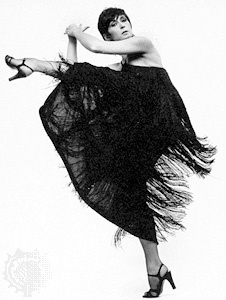Tharp, Twyla
American dancer and choreographer
born July 1, 1941, Portland, Indiana, U.S.
 popular American dancer, director, and choreographer noted for her innovation and for the humour she brought to much of her work.
popular American dancer, director, and choreographer noted for her innovation and for the humour she brought to much of her work.Tharp grew up in her native Portland, Indiana, and in Los Angeles; her childhood included comprehensive training in music and dance. While a student at Barnard College, she studied at the American Ballet Theatre School and received instruction from Richard Thomas, Martha Graham (Graham, Martha), and Merce Cunningham (Cunningham, Merce), among others. In 1963, shortly before her graduation from Barnard, she joined the Paul Taylor (Taylor, Paul) Dance Company, where she soon established herself as a dancer of considerable talent and imagination. In 1965 she formed her own troupe.
Tharp's first publicly performed piece of choreography, Tank Dive, was presented in 1965 at Hunter College. Over the next several years she choreographed numerous pieces, many of which employed street clothes, a bare stage, and no music. With her offbeat, technically precise explorations of various kinds and combinations of movements, she built a small but devoted following. In 1971 Tharp adopted jazz music and began creating dances that appealed to larger audiences. Her choreography retained its technical brilliance, often overlaid with an air of nonchalance, while its touches of flippant humour became more marked. Her pieces, most notably The Fugue (1970), Deuce Coupe (1973), Push Comes to Shove (1976), and Baker's Dozen (1979), established Tharp as one of the most innovative and popular modern choreographers. In addition, she created pieces for motion pictures such as Hair (1979), Ragtime (1981), and Amadeus (1984). In 1988 she disbanded her company and joined the American Ballet Theatre, where she served as artistic associate until 1990. Tharp's autobiography, Push Comes to Shove, was published in 1992.
See also Tharp's Sidebar: On Technology and Dance.
- Rucellai, Palazzo
- Ruckers, Hans, The Elder
- Ruda Śląska
- rudd
- rudder
- Rudd, Kevin
- Rudd, Steele
- ruddy turnstone
- Rude, François
- Rudel, Julius
- Rudi Gernreich
- Rudinì, Antonio Starabba, marchese di
- Rudnicki, Adolf
- Rudny
- Rudolf
- Rudolf Abel
- Rudolf Albert von Kölliker
- Rudolf, Archduke and Crown Prince of Austria
- Rudolf Baumbach
- Rudolf Brun
- Rudolf Bultmann
- Rudolf Caracciola
- Rudolf Carnap
- Rudolf Christoph Eucken
- Rudolf Clausius